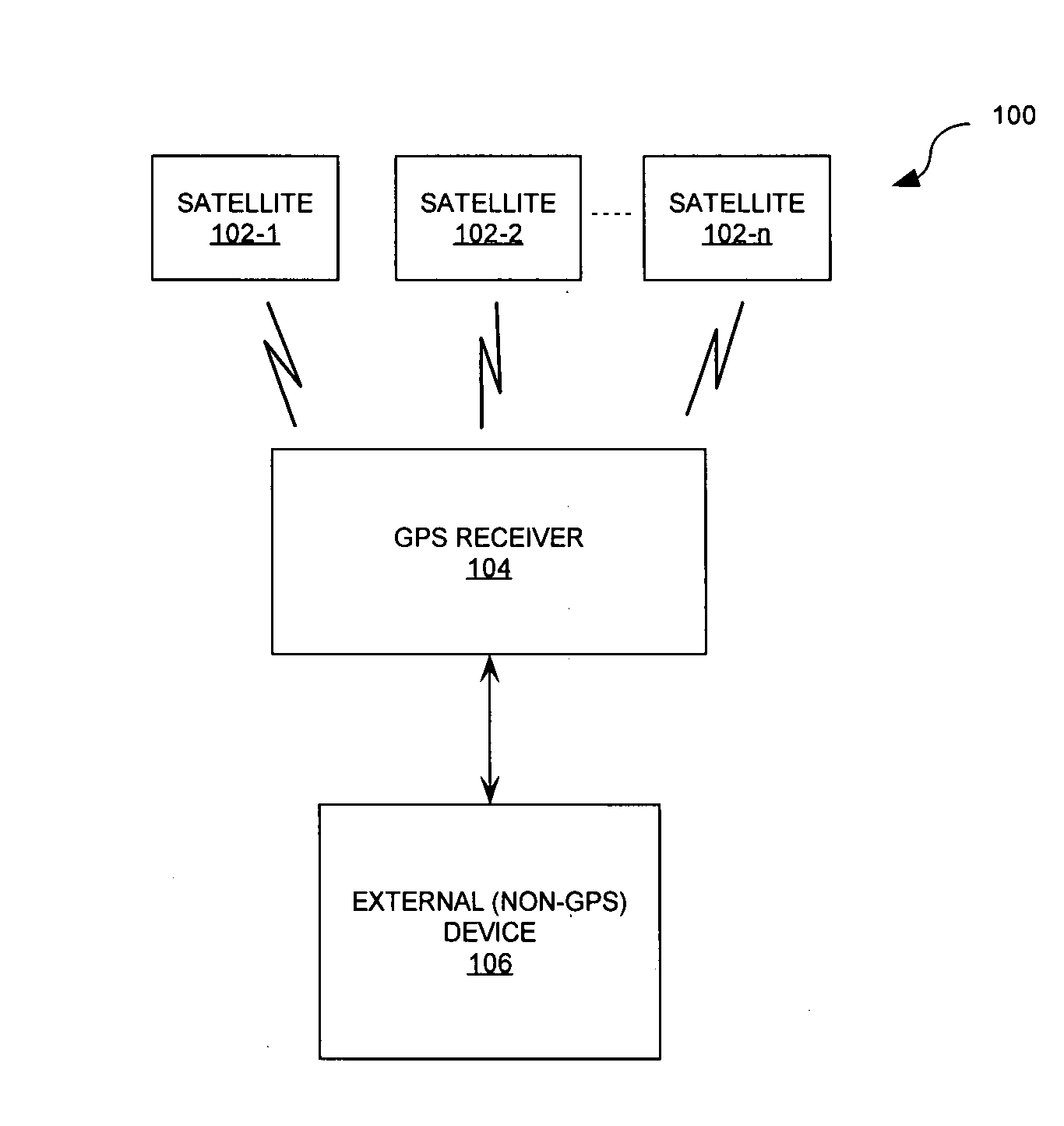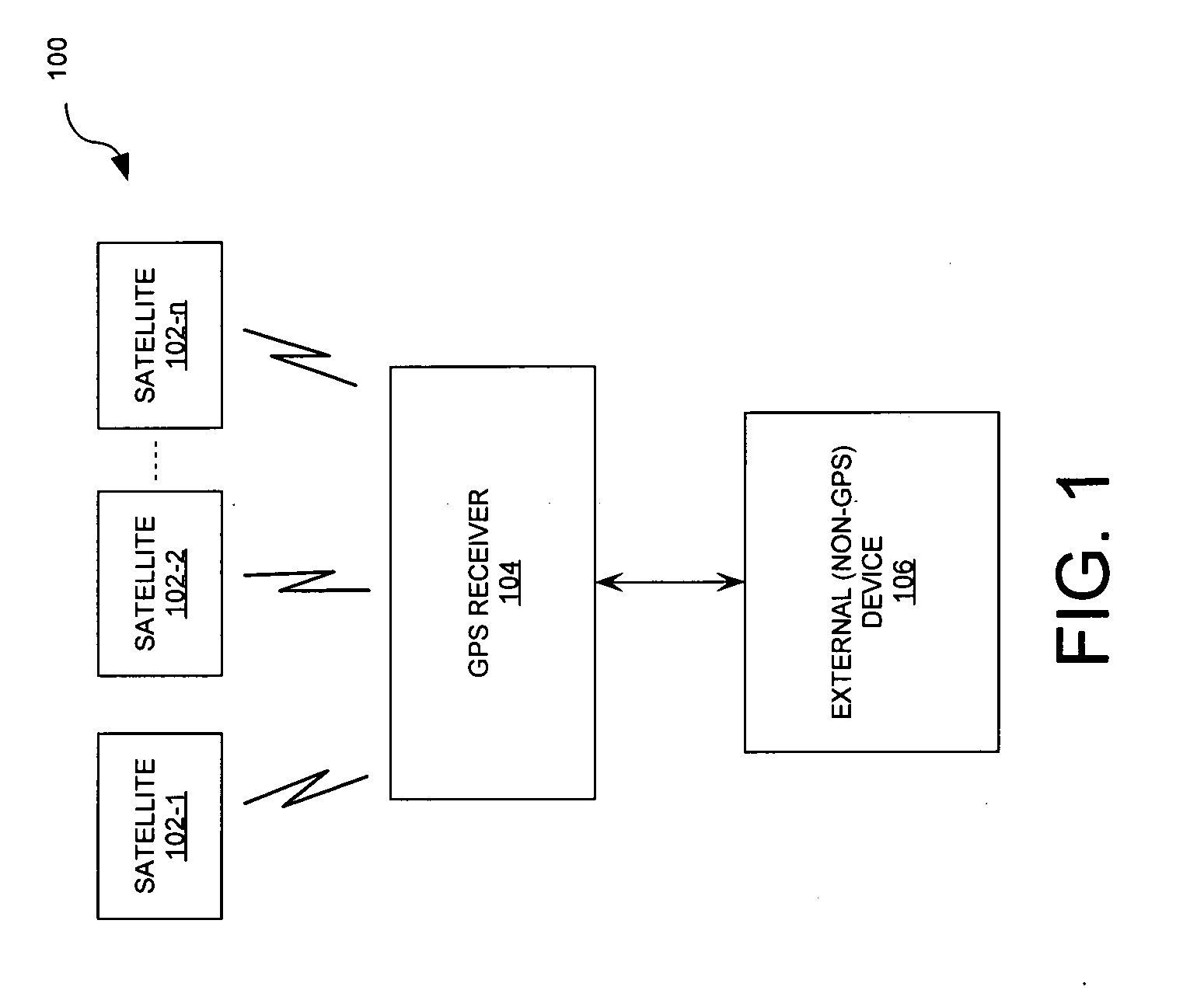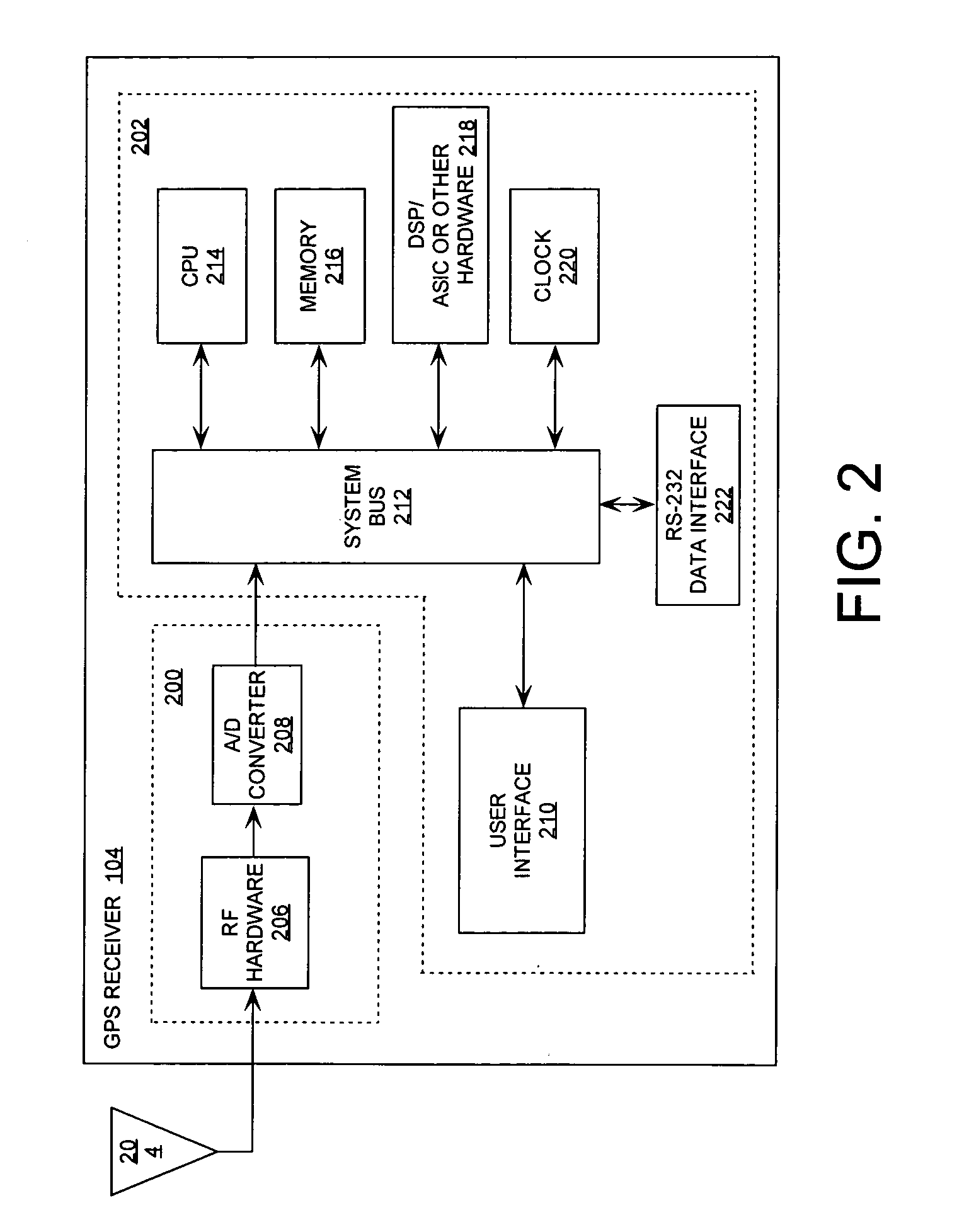Synchronization of an external device using a GPS receiver
- Summary
- Abstract
- Description
- Claims
- Application Information
AI Technical Summary
Benefits of technology
Problems solved by technology
Method used
Image
Examples
Embodiment Construction
[0029]FIG. 1 is a block diagram of a global positioning system 100. Global positioning system (GPS) 100 is typically comprised of at least 24 earth orbiting satellites 102-1, 102-2, 102-n, and a GPS receiver 104. Typically there are about 11 satellites in view of a GPS receiver 104 from a location on earth. However, the invention is not limited with regard to the number of satellites. Satellites 102-1, 102-2, 102-n have onboard atomic clocks and transmit a radio signal that includes the precise time according to their own internal clock. The atomic clocks on the satellites are set to “GPS time”. By definition, GPS time is the number of seconds since 00:00:00 UTC, Jan. 6, 1980. GPS receivers apply to this received signal a clock-correction offset (which is periodically transmitted along with the other data) in order to accurately determine the correct UTC time. The receiver can also automatically adjust for a local time zone. Consequently, the GPS receiver can serve as a precise, hig...
PUM
 Login to View More
Login to View More Abstract
Description
Claims
Application Information
 Login to View More
Login to View More - R&D
- Intellectual Property
- Life Sciences
- Materials
- Tech Scout
- Unparalleled Data Quality
- Higher Quality Content
- 60% Fewer Hallucinations
Browse by: Latest US Patents, China's latest patents, Technical Efficacy Thesaurus, Application Domain, Technology Topic, Popular Technical Reports.
© 2025 PatSnap. All rights reserved.Legal|Privacy policy|Modern Slavery Act Transparency Statement|Sitemap|About US| Contact US: help@patsnap.com



